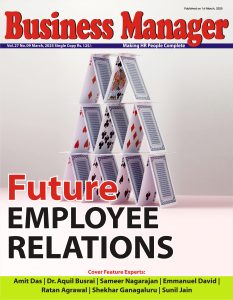Many businesses have adapted to changing needs with a long-term focus on a hybrid workforce as they shift gears, returning to proactive planning and away from crisis mode. After dealing with the great resignation and skills crisis, intelligent organizations have learned that enabling employees to transform their skill sets in a meaningful way, with a clear career path, will offer the most significant benefits to both individuals and the business.
Learning and development have thus become a priority with a laser-sharp focus on implementing effective and modernized training programs. But many organizations have yet to effectively adapt their L&D strategies for the hybrid environment, even though most employers plan to continue this working model.
Prioritize building technical skills
Digital innovation is a force driving most industries in the modern world. But the prevailing IT skills gap will affect organizations’ strategic goals when they struggle to find and retain tech talent. According to IDC, it will impact 90% of organizations by 2025. To drive organizational performance and thrive in the hybrid world, investment in developing skills should be a top priority. That means being committed to continuous training of the entire workforce across all functions. The hybrid mode warrants a movement away from traditional training methods. Training must employ carefully curated learning channels that combine video learning, hands-on practice labs, certifications, and digital badges. These accord flexibility and ensure that the learning experience is engaging and interactive.
Also read: Make policies compatible to ensure the spirit of hybrid working is upheld – Bhavna Batra
Develop skills to stay current and future-ready
Digital transformation is not a new phenomenon. However, the challenge lies in developing a strategy for the future of work where the business needs rapidly change, and the workforce dynamics will always be in flux. Learning will continue to play a crucial role in building a future-fit workforce ready to respond to future change. For that, what is required is an agile approach to the people, processes, and technologies that deliver learning.
Leaders must develop and nourish diversity and inclusion strategies to create more robust and balanced teams. Organizations can make work better, especially for women in tech, to inspire and support them to advance to leadership positions by modifying learning programs that better fit real-life situations and the need for a work-life balance in an increasingly hybrid workforce.
Pre-plan to avoid pitfalls
Leaders must ask themselves several important questions as they work to enhance learning in a hybrid world. What infrastructure is required to create an effective learning environment? Are we able to develop the future-focused skills our business requires? Should we leverage in-person Instructor-Led Training properly to reflect today’s need for a more blended approach? How do we build the capability to help our workforce benchmark their knowledge and identify gaps? Once these are answered, the focus should be on the following considerations for building effective strategies for learning in evolving workplaces. These include:
- Developing Virtual Instructor-Led programs keeping in mind the needs of the company and the work environment.
- Use tools that employees are already familiar with, like Microsoft Teams, Asana, Webex, and Zoom, ensuring the effective acquisition and retention of learned material.
- Develop an agile workforce that’s flexible and responsive enough to thrive in a remote or hybrid environment.
- Ensure you develop engaging learning programs where the workforce learns together whether in the office or working remotely.
- Incorporate learners’ opinions to track metrics that can evaluate training effectiveness and ways to improve.
Don’t Overlook Diversity and Inclusion
You cannot overlook diversity and inclusion in your grand strategy of learning and development programs. Leaders must develop and nourish diversity and inclusion strategies to create more robust and balanced teams. Organizations can make work better, especially for women in tech, to inspire and support them to advance to leadership positions by modifying learning programs that better fit real-life situations and the need for a work-life balance in an increasingly hybrid workforce.
Only by building effective learning strategies can organizations win the war for talent while enhancing loyalty and performance. The aim must be to create a culture of ever-improving skills where individuals can fulfill their potential — which directly impacts the bottom line.
Stay connected with us on social media platform for instant update click here to join our LinkedIn, Twitter & Facebook
























Add comment